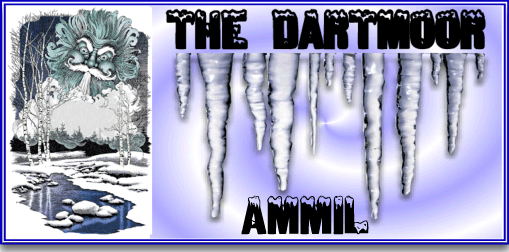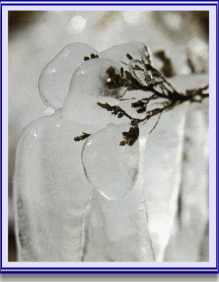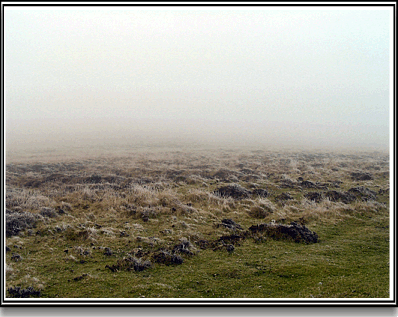
Every now and then nature transforms Dartmoor into a spectacle of shimmering ice and frost which coats literally everything in a mantle of glistening ice crystals, on the moor this is known as ‘The Ammil’. This phenomenon occasionally occurs in other parts of the country but is normally regarded as particular to Dartmoor. The word ‘ammil’ is thought to derive from the old English ammel which means – enamel, which is exactly what the ice does it coats or enamels every projecting thing on the moor. Be it a blade of grass, a leaf, rock or a tree branch the ammil covers it all, turning the moor into a shimmering ‘ice age’. The ammil occurs when a winter thaw is suddenly arrested by a rapid drop in temperature which results in the moisture being frozen. Sometimes larger objects can get a build up of several layers of ice which because of its weight can cause havoc with old trees and dead branches. When an ammil coats tall grasses the weight of the ice bends them until the tips reach down to the snow. The wind will then blow the tips which rotate and ‘etch’ circular patterns in the snow which gives a Spiro-graph effect. If the wind is gentle enough ‘ice show’ is accompanied by the soft melodious chiming made by the frozen icicles clinking against each other. Henry Williams describes an ammil in his book ‘Tarka the Otter’;
“When the sun, like an immense dandelion, looked over the light-smitten height of Cosdon Beacon, Tarka was returning along a lynch, or rough trackway to the river. The grasses, the heather, the lichens, the whortleberry bushes, the mosses, the boulders – everything in front of the otter vanished as though drowned or dissolved in a luminous strange sea. The icy casings of leaves and grasses and blades and sprigs were glowing and hid in a mist of sun-fire.”

Probably the most famous ammil was that of March 1947 which has become known as ‘The Great Ammil’ which is described in Harvey’s and St. Ledger Gordon’s book – Dartmoor, p.199:
“For two months white Winter had allowed his artistry full scope, as displayed in fantastic snowdrifts and frozen waterways, but the climax came with light rain, falling with the thermometer well below freezing point. Every bush, tree, sprig of heather, bracken frond or reed, every rail or post, each inanimate object, was sheathed in ice as though in a glass case… The tors, usually stern and grey, now stood like mighty glaciers, towering above a tumbled sea of crystal. Under the cold bright sunshine, each wooded combe of the foothills was a shining wonderland where great trees stood, as if rough-carved in ice, and nothing seemed alive or real but the chill wind which rattled the branches and now and again brought an over-weighted bough crashing down to snow level with a roar like falling masonry.”
There were other notable ammils in 1929, 1952, and more recently there was an ammil on Dartmoor during the first weekend of February 1996. At Princetown it lasted for 5 days, each night saw a sharp frost so in places the ice built up to a thickness of 3 inches. Some of the tree branches could not bear the weight of the ice and broke off which caused a problem for road users. The photograph below shows a ‘mini’ ammil and was taken in February 2006 when the temperature stayed below freezing for many days.

 Legendary Dartmoor The many aspects past and present of Dartmoor
Legendary Dartmoor The many aspects past and present of Dartmoor

This is an awesome description of the Ammil – what a great page! I come from 3 generations of Doctors – 2 based on Exmoor and I grew up with Henry Williamson`s book, Tarka the Otter so loved the quote. I live in far-off New Zealand Aotearoa now but the S Island has many hoar frosts and occasionally similar conditions to the Ammil.